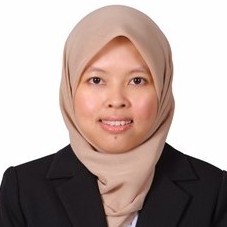Innovative Methods and Technology for Resilience Agrifood Systems
A special issue of Agriculture (ISSN 2077-0472). This special issue belongs to the section "Agricultural Technology".
Deadline for manuscript submissions: closed (10 May 2023) | Viewed by 3539
Special Issue Editors
Interests: remote sensing; agriculture engineering; hyperspectral imaging system; spectroscopy technology; smart farming; precision agriculture; machine learning; data science; agricultural informatics; instrumentation
Special Issues, Collections and Topics in MDPI journals
Interests: AI applications in food processing; non-thermal technologies applications food treatment; ultrasound; cold plasma; pulsed UV light; sustainable food processing technology development
Special Issues, Collections and Topics in MDPI journals
Interests: agricultural instrumentation; agricultural information technology; agricultural informatics; computational intelligence; precision agriculture
Special Issue Information
Dear Colleagues,
There is no doubt that the world’s growing population urgently needs to develop agricultural and farming techniques to increase productivity to achieve the goal of "Zero Hunger". By November 16, 2022, it is projected that the global population will reach 8 billion, and by 2050, it will increase to about 9.7 billion. The Food and Agriculture Organization (FAO) predicted that worldwide food demand will rise by 50% by 2050. From now till the end of the 21st century, considering the SDG’s targets, substantial effort and innovation will be required to increase agricultural production and food processing sustainably. Consequently, the development and optimization of sustainable modern technologies are indispensable for changing the landscape of how agrifood production and processing are performed and enhancing the operating capabilities in the agriculture sector. Furthermore, there might be a need to revive traditional agricultural methods with advanced technological techniques that could lead to eco-friendly, sustainable, and efficient agrifood systems.
This Special Issue, “Innovative Methods and Technology for Resilience Agrifood Systems”, aims to cover the recent developments and the latest research in resilience farming systems, agricultural productions, and modern techniques in post-harvest food handling and processing, storage, and aggregation. We specifically target the development and application of novel and innovative technologies that provide insight into sustainable and smart agrifood systems. Contributions are expected to cover techniques such as advanced sensing systems, agricultural automation, and robotics, agrifood electronics, crop innovation technology, information and communication technology, data analytics, and computational intelligence. In addition, review papers providing critical overviews of state-of-the-art developments on smart agrifood systems research are welcomed. Topics include, but are not limited to:
- Smart Farming;
- Precision Agriculture;
- Data-driven Agrifood Systems;
- Crop Innovation Technology;
- Smart Food Processing and Handling;
- Nondestructive methods for Agrifood Quality Assessment.
Dr. Alfadhl Alkhaled
Dr. Akinbode A. Adedeji
Dr. Samsuzana Abd Aziz
Guest Editors
Manuscript Submission Information
Manuscripts should be submitted online at www.mdpi.com by registering and logging in to this website. Once you are registered, click here to go to the submission form. Manuscripts can be submitted until the deadline. All submissions that pass pre-check are peer-reviewed. Accepted papers will be published continuously in the journal (as soon as accepted) and will be listed together on the special issue website. Research articles, review articles as well as short communications are invited. For planned papers, a title and short abstract (about 100 words) can be sent to the Editorial Office for announcement on this website.
Submitted manuscripts should not have been published previously, nor be under consideration for publication elsewhere (except conference proceedings papers). All manuscripts are thoroughly refereed through a single-blind peer-review process. A guide for authors and other relevant information for submission of manuscripts is available on the Instructions for Authors page. Agriculture is an international peer-reviewed open access monthly journal published by MDPI.
Please visit the Instructions for Authors page before submitting a manuscript. The Article Processing Charge (APC) for publication in this open access journal is 2600 CHF (Swiss Francs). Submitted papers should be well formatted and use good English. Authors may use MDPI's English editing service prior to publication or during author revisions.
Keywords
- smart farming
- precision agriculture
- data-driven agrifood systems
- crop innovation technology
- smart food processing and handling
- nondestructive methods for agrifood quality assessment







